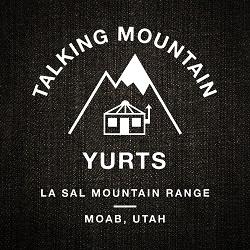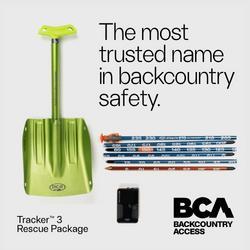Forecast for the Uintas Area Mountains

Issued by Craig Gordon on
Thursday morning, January 31, 2019
Thursday morning, January 31, 2019
WHILE LESS WIDEPSREAD AND BECOMING HARDER TO TRIGGER.... DECEPTIVELY TRICKY AVALANCHE CONDITIONS CONTINUE ON THE EASTERN FRONT
In the wind zone at and above treeline, you'll find CONSIDERABLE avalanche danger. Human triggered avalanches are PROBABLE on all steep wind drifted slopes, especially those facing the north half of the compass and particularly those with an easterly component to their aspect. Any avalanche that breaks into deeper buried weak layers near the ground will result in a scary and very dangerous avalanche that will instantly ruin your day.
MODERATE avalanche danger exists on steep, mid elevation slopes facing the north half of the compass and human triggered avalanches are POSSIBLE.
Here's your exit strategy.... lower elevation, low angle terrain offers cold snow and a generally LOW avalanche danger.

Low
Moderate
Considerable
High
Extreme
Learn how to read the forecast here
 Special Announcements
Special Announcements
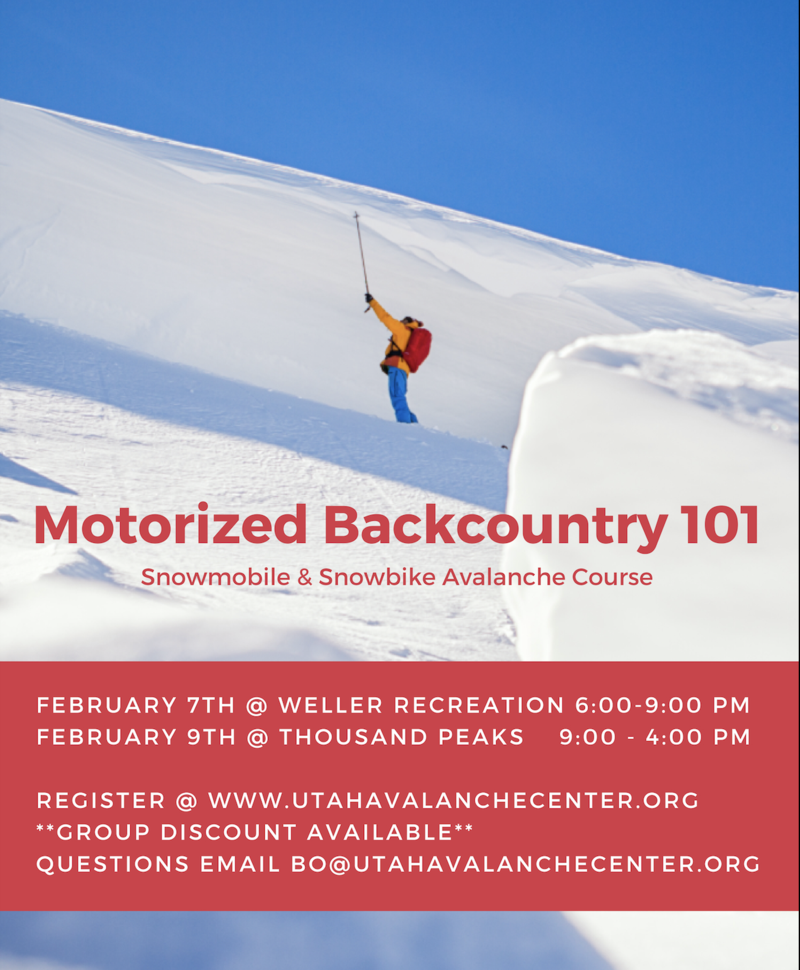
 Weather and Snow
Weather and Snow
Above the building valley haze and gunk, clear skies and clean air is found in the mountains. Currently, temperatures are in the teens and low 20's. Winds are northwesterly and light, blowing 15-25 mph along the high peaks. The snow surface could use a fresh coat of white paint, however amid the old tracks, wind board and sun funk, and with a little searching, you can still score soft creamy snow on wind sheltered, mid elevation slopes.
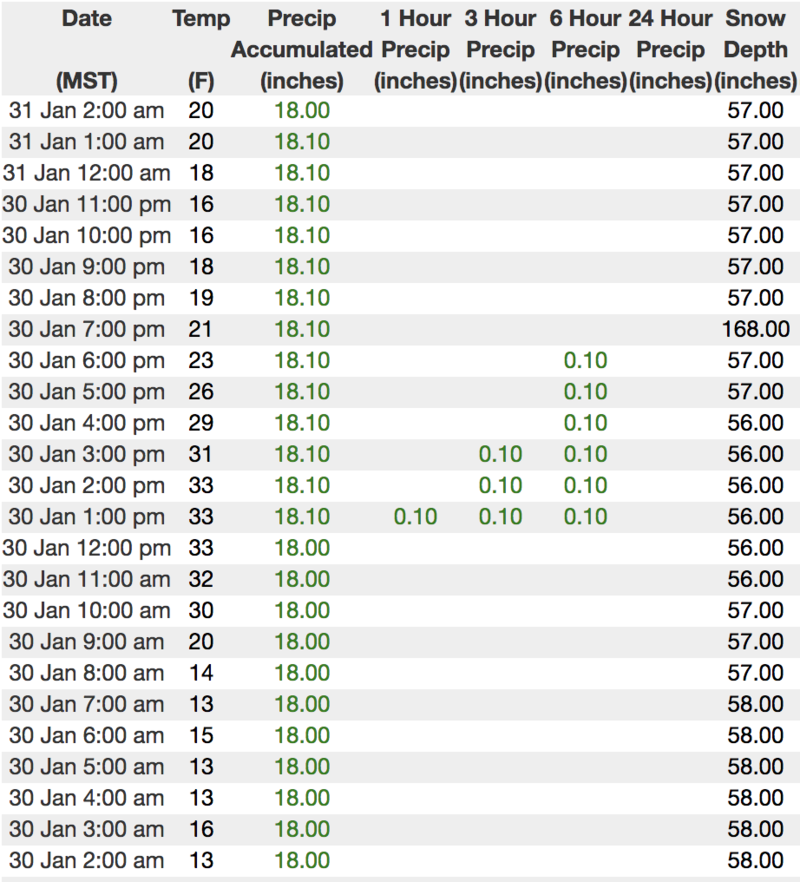
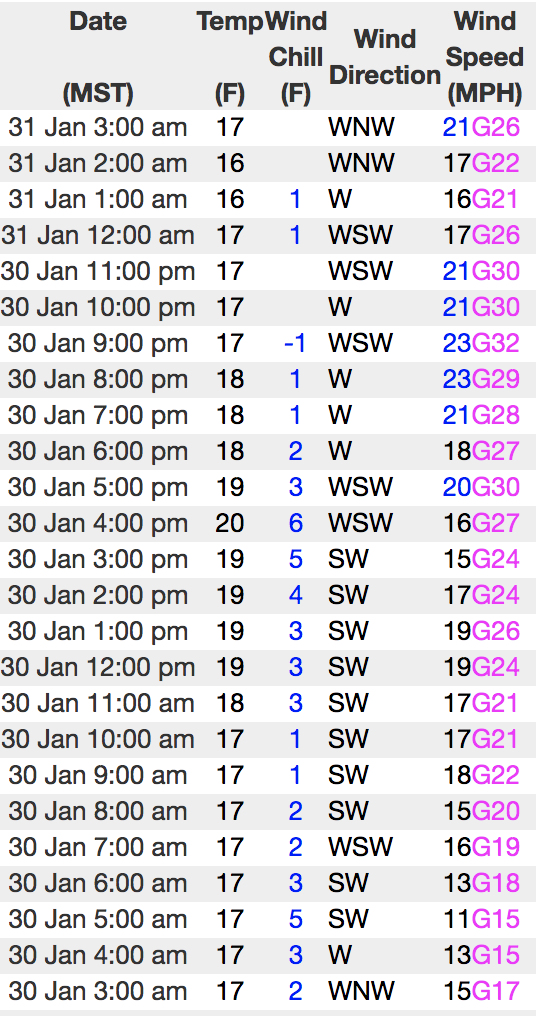
Above is hourly data from Trial Lake (9,945') and Windy Peak (10,662'). To view more regional weather stations click here.
 Recent Avalanches
Recent Avalanches
No new avalanche activity to report from yesterday, the first day in a week, but it's been a very busy week in the western Uinta's with a handful of large, snowmobile and skier triggered slides, resulting in a wrecked sled and few close calls.

Dave and Pete thumped this upper elevation, northwest facing slope yesterday, getting it to fail on early season facets and breaking 2'-4' deep and about 200' wide.
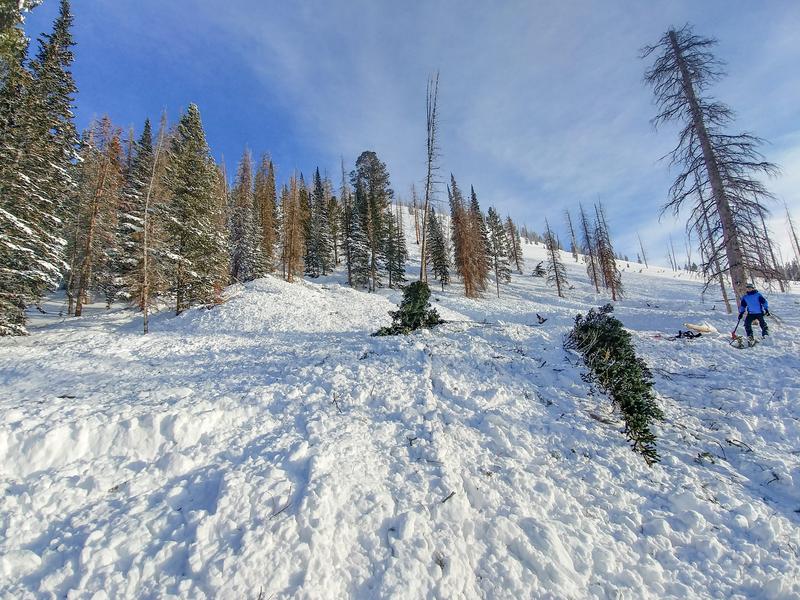
3' deep and 50' wide, this skier triggered pocket Tuesday near the Boundary Creek Yurt was smaller than recent human triggered slides. But you can clearly see by the snapped timber, this avy was packing a punch and meant business.
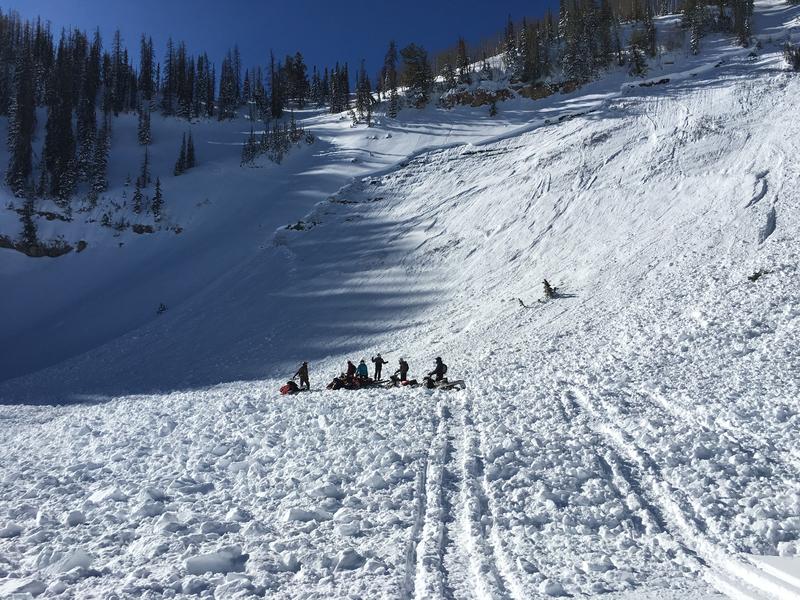
4' feet deep and 500' wide, the slide above was triggered Sunday near Hoyt Peak. We are of course happy everyone came out unscathed, but we're running out of luck, and there's not many empty chambers left.
BUT WAIT... THERE'S EVEN MORE AVY ACTIVITY FOUND HERE.
Avalanche Problem #1
Persistent Weak Layer
Type
Location
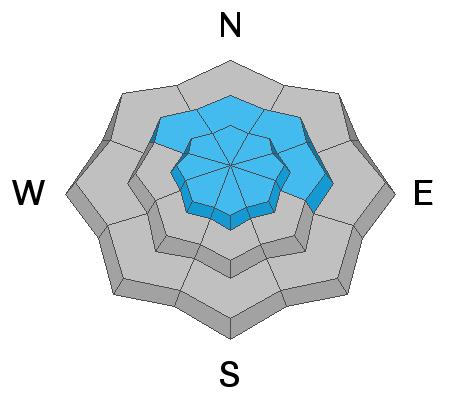
Likelihood
Size
Description
As the snowpack slowly becomes comfortable in its own skin, avalanches are harder to trigger.... good news! And there are plenty of slopes to ride and not trigger avalanches.... better news! However, the problem with persistent weak layers in the snowpack is they linger for long periods of time and often suggest a false sense of snow stability because the snow will feel solid and stable under our skis, board, or sled. But remember, all it takes is for us to find one weakness on the slope, perhaps where it's thin like by a rock or bush we can't see under the snow, collapse the pack, and now all bets are off.... we're staring down the barrel of a dangerous slide.
It doesn't mean we can't ride, but it's tricky out there and here's why. Many steep slopes throughout the range experienced a widespread natural avalanche cycle late last week, but recent snow and wind has filled in much of that evidence. So today it's all gonna look white and that's the challenge. You can ride some slopes without incident (perhaps they already slid) and think you're good to go, while an adjacent slope that remained intact throughout the storm, is just waiting for a trigger like us to roll up and tip the balance.
Of course you wanna know... "how do we manage an unmanageable avalanche?" Well with all the great riding out there and plenty of alternative options, we simply avoid the terrain where it exists. You know the drill by now.... steep, rocky, wind drifted slopes, especially those facing the north half of the compass. Listen to this groups decision making process here.
This viddy clearly illustrates our current setup. Bo and Andy commented, "In some test pits it was very easy to initiate failures and in others, it was more difficult. The common theme among all of the tests was that they were breaking deep in the snowpack on old snow. This tells me that in some areas, the avalanches might be less sensitive to trigger but if you trigger an avalanche it will break deep."
Avalanche Problem #2
Wind Drifted Snow
Type
Location

Likelihood
Size
Description
As you know the Uinta's are a big place and there always seems to be a terrain driven slab or two lurking along the leeward side of an upper elevation ridgeline. Today you'll want to continue utilizing all the awareness tools in your quiver. Look for obvious clues to unstable snow like shooting cracks out in front of our skis, board, or sled. Also remember to avoid any fat, rounded piece of snow especially if it sounds hollow like a drum. And finally the hugest clue... recent avalanches on the same kind of terrain you want to ride on.
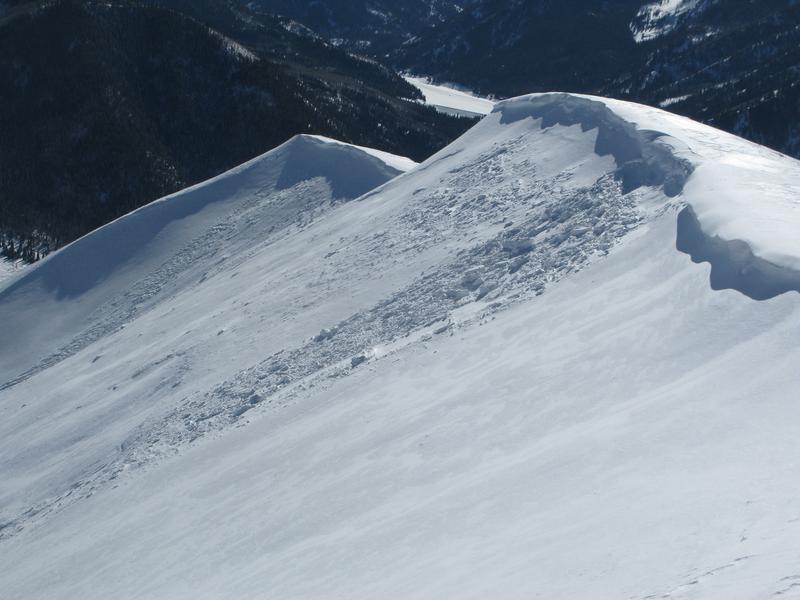
A recently windloaded, upper elevation northeast facing slope, reacted to my additional weight Tuesday. Not particularly large, but gives me a baseline to the type of terrain I wanna ride.
Additional Information
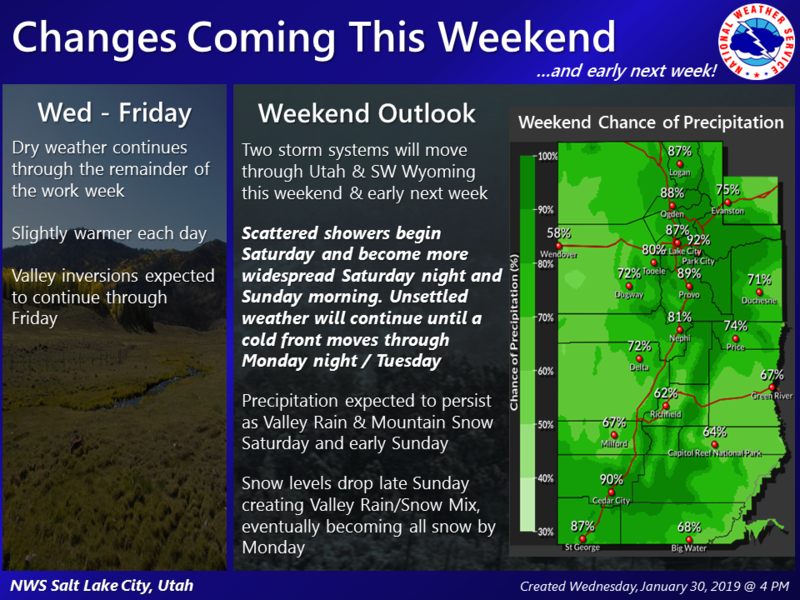
A few more sunny days are on tap with highs reaching into the 30's. Winds remain light and westerly, blowing in the 20's along the high ridges. Changes are on tap Friday and it will be warm and windy ahead of the first in a series of storms slated to impact the region beginning Saturday.
General Announcements
The information in this advisory expires 24 hours after the date and time posted, but will be updated by 7:00 AM Friday February 1st, 2019.
If you're getting out and about, please let me know what you're seeing especially if you see or trigger and avalanche. I can be reached at craig@utahavalanchecenter.org or 801-231-2170
It's also a good time to set up one of our very popular avalanche awareness classes. Reach out to me and I'll make it happen.
This information does not apply to developed ski areas or highways where avalanche control is normally done. This advisory is from the U.S.D.A. Forest Service, which is solely responsible for its content. This advisory describes general avalanche conditions and local variations always occur.



